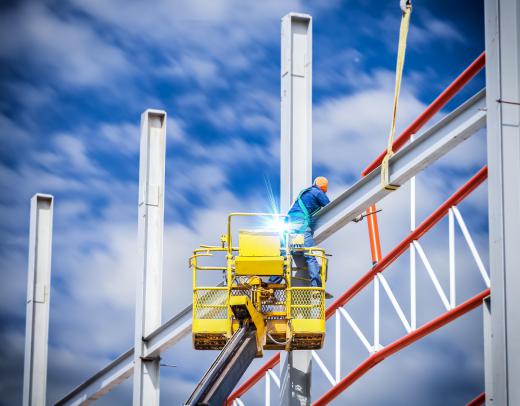A box girder is a type of structural beam used in construction that is very often made of steel, though in the past iron was commonly used for construction purposes. This type of beam uses one or more enclosed cells within the beam for structural integrity, as opposed to an I-beam or H-beam, both of which have open ends. Bridge construction will often necessitate the use of the box girder, as will other structures such as buildings. This type of girder can usually hold more weight than an I-beam, and it will be more resistant to torsional damage, or twisting.
Bridges are sometimes constructed with a box girder design on a much larger scale. Bridges that curve or bend especially benefit from this design because of the box girder's ability to resist torsion. Concrete can actually be poured into the appropriate shape, usually underneath the bridge's deck, to add torsional rigidity to the overall structure. The box girder design may feature only one cell, or box, while other designs may feature a multi-cell system that includes many boxes. The shape of the box is not always rectangular, either; each box can be tapered to accommodate a specific design for the structure. This is sometimes called a cellular girder design.

The disadvantages of a box girder can prevent it from regular use. These beams are generally more expensive to fabricate, and they can be more susceptible to rusting and corrosion because water can begin to pool within the cell of the beam. Several bridges using the box girder design have collapsed in the past, leading to a reevaluation of the design's usefulness and safety for bridge design. Many bridges are still built using this technique, however, with no great safety risk.
A significant advantage of box girders is the ability to support a significant amount of weight in the same length as compared to an I-beam. Structures can therefore be built taller, wider, or longer using box girders than with other designs. The multi-cell design can enhance the strength even further, making it possible to build long bridges over wide spans. The bridge and other structures will, however, often require more regular inspection and maintenance to ensure the girders are still strong, well conditioned, and able to handle the regular stresses of the structure. Such inspections and maintenance can become costly, and combined with the overall cost of fabricating the materials, the structure may become cost-prohibitive to build with such girders.
